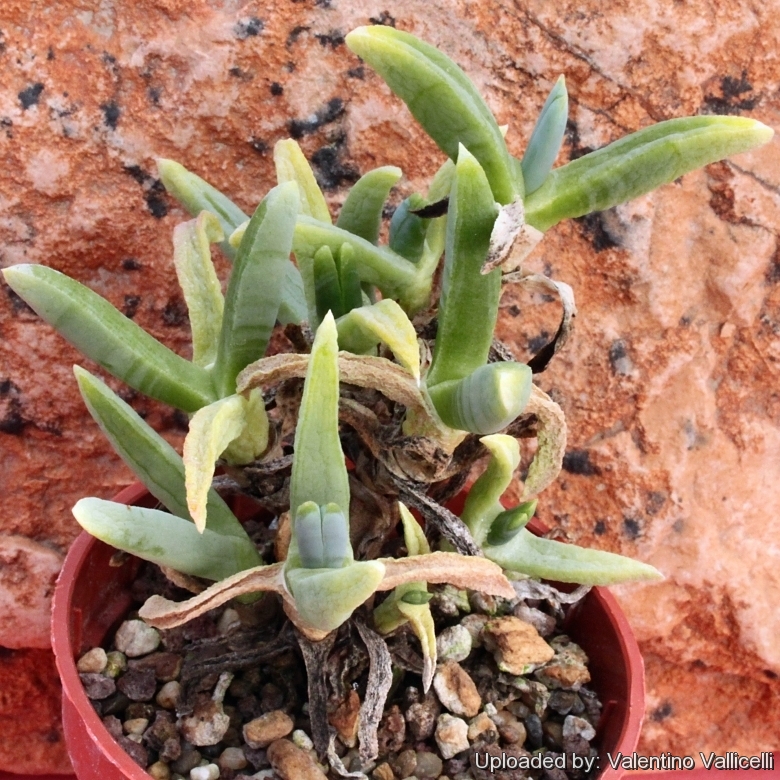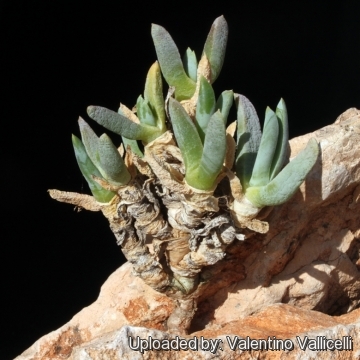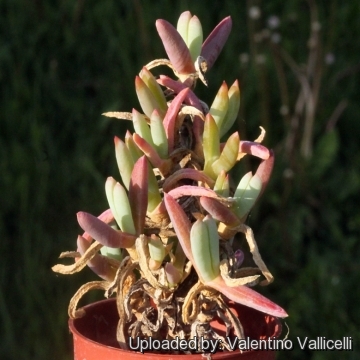Accepted Scientific Name: Malephora crassa (L. Bolus) H.Jacobsen & Schwantes
Natl. Cact. Succ. J. 13: 77 1958

Hymenocyclus crassus (Malephora crassa) Photo by: Valentino Vallicelli
Origin and Habitat: Ceres District, Western cape, South Africa.
Habitat: Grows in flats on fine loamy soils.
Synonyms:
Common Names include:
ENGLISH: Golden Finger
Description: It is a prostrate perennial shrub with slender, trailing branches up to 30 cm tall that spreads into a broad rounded mat up to 1 meter in diameter..
Stems: Many, very short, weak, at first erect then prostrate, rooting at almost each node.
Leaves: Crowded on short shoots, united below, almost cylindrical, pointed, slightly, 3-angled, compressed, or almost club-shaped, up to 4 cm long 6 mm in diameter, grey green to blue green, bloomed with a blue layer of wax.
Flower: Solitary, terminal, on very short, erect, shoots, golden yellow up to 3 cm in diameter. Pedicel 10-20 mm long.
 Hymenocyclus crassus (Malephora crassa) Photo by: Valentino Vallicelli
Hymenocyclus crassus (Malephora crassa) Photo by: Valentino Vallicelli Hymenocyclus crassus (Malephora crassa) Photo by: Valentino Vallicelli
Hymenocyclus crassus (Malephora crassa) Photo by: Valentino VallicelliCultivation and Propagation: The plants in this genus represent some of the more easily cultivated succulent species. Water moderately from early spring to the end of autumn, and keep the compost quite dry when the plants are dormant watering, only if the plant starts shrivelling (, but they will generally grow even in winter if given water) In areas prone to frost, grow in an intermediate greenhouse or conservatory, in pots of cactus compost, obtainable from good garden centres. Provide maximum light all the year round.
Propagation: Seeds or cuttings. Seeds can be sown in early to mid-spring and germinated in heated humid environment. Alternatively, use stem cuttings taken towards the end of summer.
Uses: It is an easy-to-grow groundcover, ideal for low-maintenance and water-wise gardens. It can be used to control erosion on moderately steep areas. They are also recommended for highway plantings because their inconspicuous flowers do not distract motorists.













